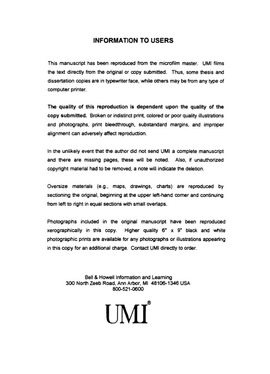| dc.contributor.advisor | Civan, Faruk, | en_US |
| dc.contributor.author | Wang, Shaojun. | en_US |
| dc.date.accessioned | 2013-08-16T12:31:11Z | |
| dc.date.available | 2013-08-16T12:31:11Z | |
| dc.date.issued | 2000 | en_US |
| dc.identifier.uri | https://hdl.handle.net/11244/6047 | |
| dc.description.abstract | In this study, a polymer solution model for asphaltene precipitation was used to simulate the experimental data of asphaltene precipitation due to pressure depletion. The results predicted by the polymer solution model matched the experimental data accurately after several improvements. A model for asphaltene precipitation and deposition in core tests was developed and numerically solved and then applied to six sets of experimental data. The model satisfactorily matched the data and model parameters were determined to match the data. | en_US |
| dc.description.abstract | Asphaltene is known to precipitate and deposit in petroleum reservoirs during primary oil recovery. Previous research focuses on the asphaltene precipitation and deposition during hydrocarbon and carbon dioxide miscible flooding. The process of asphaltene precipitation and deposition during primary oil recovery is different. Although several attempts were made to model and simulate the asphaltene precipitation and deposition in petroleum reservoirs during primary oil recovery, they have not been fully successful because of the lack of sufficient understanding of the problem. | en_US |
| dc.description.abstract | The model and simulator developed in this study can be used to analyze experimental data of asphaltene deposition in core tests. It can also be applied to simulate asphaltene deposition in petroleum reservoirs with vertical or horizontal wells during primary oil recovery and to assist in the development of strategies to alleviate asphaltene deposition problems. | en_US |
| dc.description.abstract | Finally, a model for the simultaneous deposition of paraffin and asphaltene in porous media was developed. The corresponding numerical model is developed using a fully implicit scheme. Because the numerical model is strongly coupled, a double iteration method was used to solve the equations. The model was verified using two sets of experimental data. | en_US |
| dc.description.abstract | By incorporating asphaltene precipitation, deposition and mass balance models into a three-dimensional and three-phase black oil simulator, a simulator for asphaltene deposition in petroleum reservoirs with vertical or horizontal wells was developed with respect to primary oil recovery. Two typical scenarios were evaluated. Case I involved the asphaltene precipitation and deposition in a reservoir developed by a vertical well during primary oil recovery. Case II involves the asphaltene precipitation and deposition in a reservoir developed with a horizontal well. In both cases, the simulator predicted the reasonable distributions for pressure, dissolved asphaltene, asphaltene precipitate, asphaltene deposit, as well as porosity and permeability throughout the reservoir. The pattern of asphaltene deposition in reservoirs with a vertical well was shown to be significantly different from that in reservoirs with a horizontal well. | en_US |
| dc.format.extent | xvii, 133 leaves : | en_US |
| dc.subject | Oil fields Production methods. | en_US |
| dc.subject | Engineering, Petroleum. | en_US |
| dc.subject | Asphaltene. | en_US |
| dc.title | Simulation of asphaltene deposition in petroleum reservoirs during primary oil recovery. | en_US |
| dc.type | Thesis | en_US |
| dc.thesis.degree | Ph.D. | en_US |
| dc.thesis.degreeDiscipline | Mewbourne School of Petroleum and Geological Engineering | en_US |
| dc.note | Adviser: Faruk Civan. | en_US |
| dc.note | Source: Dissertation Abstracts International, Volume: 61-09, Section: B, page: 4955. | en_US |
| ou.identifier | (UMI)AAI9988512 | en_US |
| ou.group | Mewbourne College of Earth and Energy::Mewbourne School of Petroleum and Geological Engineering | |
